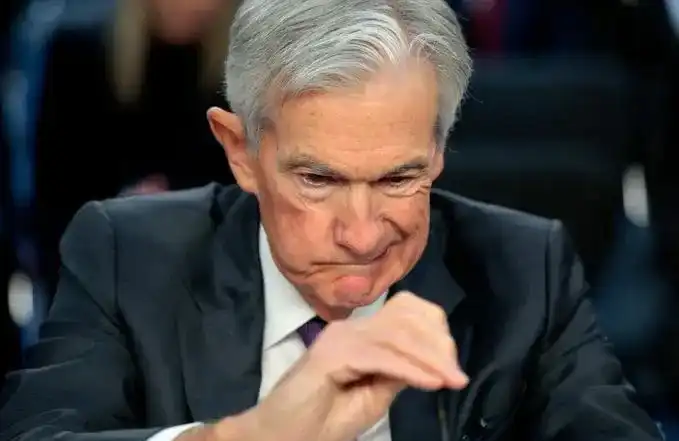Market observation: When to buy low, it's like "waiting for fish to die in the market."
Original Title: "MVC September Market Observation | When can we bottom out? It's like waiting for fish to die in the market."
Original Source: Metrics Ventures
Metrics Ventures September Market Observation Guide for Cryptocurrency Secondary Funds:
1. In September, the overall market was sluggish, with many indicators at their lowest levels of the year. Bitcoin and Ethereum chip data showed significant losses, with chips being sold off and contract positions dropping sharply.
2. Buy operation of MVC. **We made a moderate buy operation in mid-September, buying about 20% of the Ethereum position. The transaction price was around $1,600. This was mainly based on the following positive signals: after three months of chip shaking, potential selling pressure was released to a certain extent; market sentiment showed panic, etc.
3. The main contradiction in the market is still the lack of funds, which cannot be resolved at present.
4. The monthly report uses the metaphor "fish suffocating in the market" to describe our current investment strategy. Before determining the trend, we will exercise patience and wait for the true allocation point to appear.
This article is a summary and commentary by Metrics Ventures on the overall market situation and trends of the cryptocurrency market in September.
The title of this monthly report comes from a famous meme. A middle-aged woman went to the market to buy fish and stood by a small stall staring at the fish. The vendor was puzzled and asked why she didn't buy the fish she was interested in. The woman replied, "For the same fish, the live one costs 13 yuan and the dead one costs 3 yuan. I'm waiting for it to die." This is similar to the mentality of many secondary investors who hold a lot of currency in the current market. They sit on the sidelines and observe quietly, waiting for the live fish to die before rushing in to buy the cheap ones.
Of course, our mentality is similar. The bustling Token2049 conference in September is like a market, where some fish have already turned white and some seemingly fat and delicious fish are still struggling. However, everyone knows that they won't last long.
We engaged in some warehouse building behavior in mid-September, mainly buying about 20% of ETH positions at an average price of around $1600. This is because we observed some marginal changes in emotional and chip-level signals that we have been monitoring.
From the perspective of chip level, we can observe that as the market declines, the chips hoarded in the $29,000-$30,000 range of Bitcoin are beginning to shift to the $25,000-$26,000 range, indicating that the trapped chips due to the anticipation of Bitcoin ETF and XRP/DCG lawsuit positive expectations are surrendering and throwing out chips, and the on-chain funding provides relatively supportive buying pressure. ETH also has corresponding chip characteristics, with nearly 50% of the on-chain realized loss ETH chips, similar to the characteristics of previous panic bottoms, indicating that the bloody chips at the spot level are being thrown out. (Through the observation of on-chain data, we also found that on September 10-11, Arbitrum experienced large-scale whale cutting behavior, with a common loss range of 30-40%, which also represents that since June, the patience of large holders and whales towards the market has finally come to an end.)
From an emotional perspective, market sentiment has quickly turned pessimistic.

From the above chart, it can be observed that after nearly 11 months of market adjustment, more than 97.5% of short-term BTC chips are in a floating loss, falling from the $30,000 level to the $25,000 level. Although the absolute decline seems not huge, the pain of cutting losses and selling off is actually very intense. This level of market clearance should be able to bring about a period of market calmness of about one month.
Observing from the contract position data, in early September, the BTC contract position on Binance platform alone dropped from the peak of $4.81B to $2.88B, a decrease of about 40%. This number was $2.52B at the beginning of January 2023, the most sluggish moment in the market, and about $2.85B during the US banking crisis in March, indicating that the failure of a series of positive expectations in September did indeed greatly destroy the confidence of players in the field and exerted strong pressure on the market leverage cleaning. Moreover, throughout September, the OI position of the contract recovered slowly, with moderate fees, and was basically in a sluggish mood where no one dared to open long or short positions.
If we look closely at the hourly chart of BTC in the following figure, we can roughly observe that the narrow market fluctuations in September were a hellish mode for contract funds, with frequent liquidation events occurring both during rises and falls, and even more so during the repeated rise and fall cycles (poor souls). Therefore, it is quite clear that the sentiment of Bitcoin at the $27,000 level is actually more depressed than at the $16,000 level, with obvious bearish characteristics. The entire September and even October belong to the stage of oscillation digestion and trapped selling pressure.

Not only is the sentiment of spot and contract in the industry low, but even the on-chain Meme market that extreme left players like to hype is completely cold. As shown in the figure below, the ETH network Gas base has hit a new low for the year, and ETH has rarely entered an inflationary state since the completion of Merge, which is heavier than the coldness of the freezing point in December 2022. From the backtesting of the transaction data we monitor in Mempool, the activity of tokens without transaction taxes has sharply declined.
Not only that, but within September 2023, the DEX trading volume has not exceeded 30B, and is even lower than the 40B in December 2022. It also recorded a record low in monthly DEX trading volume since 2021 - which also matches the market sentiment we intuitively feel, where the market heat of BTC at $27,000 is even lower than when it was at $16,000.

When we observe the situation where trapped investors are cutting their losses and emotions are extremely low, we choose to enter the market with small-scale bottom fishing. This does not mean that we believe there will be any significant rebound opportunities in the short term. It is just that at this position, there are some blood-stained spot goods chips (the proportion of realized losses is high), the leverage cleaning is relatively thorough (the position is close to the lowest level of the year, and the long-short ratio is relatively low), the emotions are extremely low (the trading volume is weaker), and the market has given a signal of willingness to accept. At present, it is a position with a good risk-reward ratio. If we consider it as a long-term investment, the price is also reasonable. Even if there are possible signs of a sharp decline in the short term, we can stop loss at a clear target and at a very low cost.
Recently, there have been some widely circulated screenshots in the market about the BTC calendar effect. The main idea is that the cryptocurrency market has performed very well in October in previous years, and there is also likely to be a spectacular Alt Season. The calendar effect is considered to be a mystery, and we do not have high expectations for the market in October.
Currently, the market is barely catching its breath from the game of reducing supply. The total market value of the top five stablecoins has not significantly decreased in the past month, at most it can be considered an upgrade to a stock game. In this situation, the market is still mostly composed of oversold rebounds, with limited upside potential and the driving force is also at the spot level. As all players in the market generally have low positions, there is some buying pressure from short covering. Through market research, we found that secondary institutions and individual investors with funds over 100 million US dollars choose to adopt a fixed investment mentality to make small-scale bottom fishing.
If there is really a so-called alt season, due to the weak market liquidity and low market capitalization, some funds from short covering may bring huge gains, but there will also be a large number of altcoins competing for funds, resulting in very rapid theme rotation and poor sustainability of the market. It is estimated that there will be no significant profit-making effect for short-term trading, and those who do not run fast enough will become unfortunate liquidity exits.
The market is stagnant, with continuously hitting new lows in volatility. The proportion of long-term chips that are locked and not moving is slowly increasing, while short-term investors repeatedly chase high and cut losses, leading us into a state of dullness where we cannot go up or down. The main contradiction in the market is still the lack of funds, which cannot be resolved at present.
The core constraint of the main contradiction still lies with the Federal Reserve in the encryption industry. The September Federal Reserve interest rate meeting paused the rate hike once, but the market interpreted it as the interest rate will remain high in the long term. During the November holiday period, it was also a critical point for the US government's new fiscal year budget resolution. The US bond yield rose back to the level of 2008, and the US stock market, gold, and crude oil fell sharply, while the US dollar rose. Overseas markets were severely shaken, and signs of liquidity tightening have emerged - this is also the main consensus of the current encryption market. Those whales who have not lost all their money and are watching the fish pond outside the venue are generally waiting for the collapse of the US stock market in 2023Q4-2024Q1, using the collapse of the US stock market or interest rate cuts as a signal to confirm that the fish have completely died (the ghosts of 312 memories are echoing).
We will keep an eye on this, but we want to emphasize that since 2023, we will not base our investment decisions in the cryptocurrency market on macro information. We are not macro experts, and the end of a rate hike cycle does not necessarily mean the beginning of a rate cut cycle. Each rate cut is made after the risk has appeared, and it is not a prior signal. At the end of each rate hike cycle, a bubble will burst in some corner of the earth, and it is not necessarily the US stock market that will burst this time. Whether it will collapse or not, and when it will collapse, all of these are not helpful for our decision-making process.
Anyway, the current market is short of money, and for a while, we don't know where the working capital will come from. What we may need to face is a situation where Bitcoin is oscillating indefinitely within a 15% fluctuation range. Fish, oh fish, when will you take your last breath?
Overall, the cryptocurrency market remained sluggish in September, and we maintain a cautious attitude. Volatility and fluctuations may continue to exist until the market's funding situation improves. We will continue to focus on the fundamentals, make timely adjustments, and patiently wait for the real buying opportunity.
Original Link
Welcome to join the official BlockBeats community:
Telegram Subscription Group: https://t.me/theblockbeats
Telegram Discussion Group: https://t.me/BlockBeats_App
Official Twitter Account: https://twitter.com/BlockBeatsAsia
 Forum
Forum OPRR
OPRR Finance
Finance
 Specials
Specials
 On-chain Eco
On-chain Eco
 Entry
Entry
 Podcasts
Podcasts
 Data
Data


 Summarized by AI
Summarized by AI







